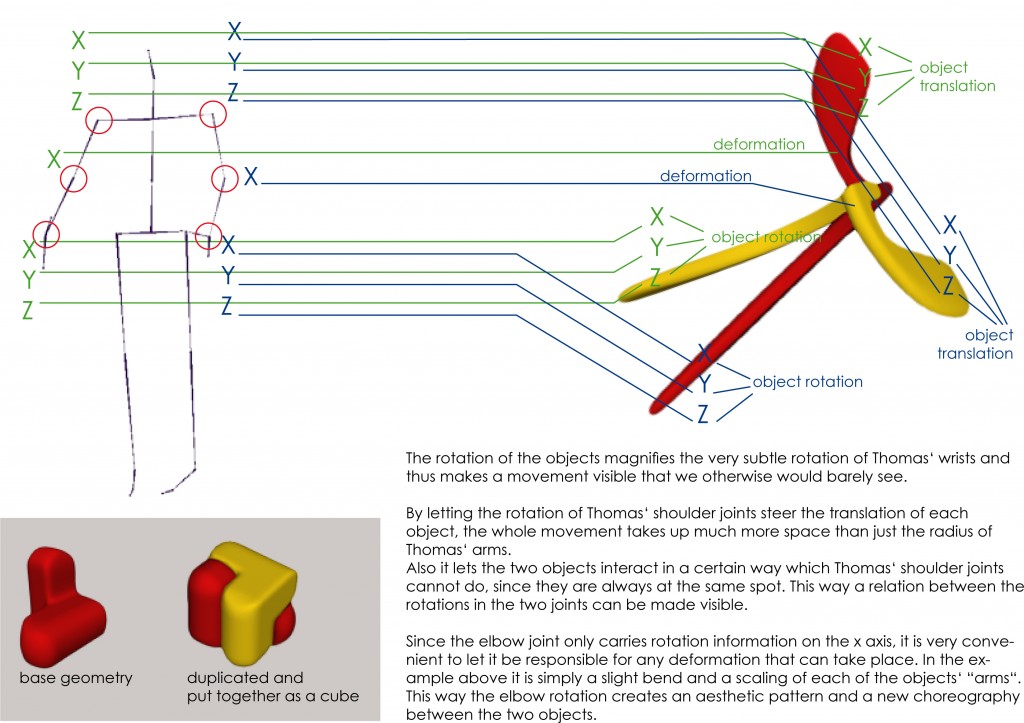Momentum in Bebe Miller’s work
Posted on July 8th, 2013
In examining the motion capture work from our January residency with Bebe Miller Company we are becoming interested in the possibility of tracing the momentum transfer through the body. The paths of momentum transfer reveal patterns of movement sequencing in the body. In both Darrell’s and Angie’s performances it is evident that several motions often happen concurrently. Performative tendencies that focus on simultaneity and dis-coordination of body segment motions are likely to interrupt viewer’s ability to anticipate movement and thus create fresh and surprising performance qualities.
There are a number of ways to approach visual representation of movement sequencing, and I thought it might be interesting to see this by making visible the sequences of joint rotations. To set up this visualization I hypothesized that the initiating joint would rotate first, sending the waves of sequential rotations to the other parts of the body. In the video of Darrell’s performance it is easy to notice many instances when sequences of joint rotations are initiated simultaneously or with minor offsets in time . I have used color coding to present two types of joint movement analysis. The red figure indicates angular/rotation speed of joints (A) (the brighter the red the higher the speed), the green figure indicates linear speed of joints’ locomotion (L). As opposed to joint rotation speed, visualization of the linear (joint translation through space) shows a more even speed value distribution that is more sequential.
Since these may be a bit hard to notice at high playback speed of the captured motion this movie is at 1/4th speed.
While working on ideas about momentum I ran across a video on momentum transfer in parkour. In this video, the second jump comes as a surprise. In order to get additional momentum to make the second jump possible, the landing position after the first jump had to be exaggerated… At a quick glance the shape of the body at the time of the first landing seemed to be that of trying to slow down. By exaggerating this pose through leaning back and further lifting the arms backwards, it is possible to gain additional momentum. This hidden quality of getting the additional momentum is very intriguing as it also serves as a way of hiding anticipation of subsequent action. This triggers parallels between the animation concepts of motion anticipation and exaggeration and Bebe Miller’s ideas of “interrupting the inevitable” as well as “furthering”.
– Vita Berezina-Blackburn, Animation Specialist/ACCAD
Tagged: Bebe Miller, visualization
